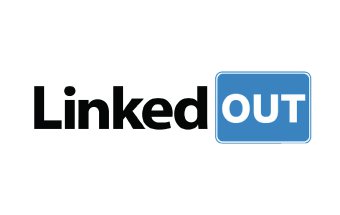
LinkedIn is the world’s largest social network for professionals. They’ve done a fantastic job of making themselves an essential part of business networking. Just about anyone who wants a job, or wants to connect with other professionals, has a LinkedIn account where they carefully curate their profile. LinkedIn has almost certainly aggregated the world’s largest and most up-to-date database of business professionals—and the market has high expectations for them to turn that into a profit, bestowing a massive P/E ratio on LinkedIn’s stock.
A few years ago, LinkedIn added Company pages, including Product and Service pages, where businesses could establish a brand presence on the social network. Unfortunately, LinkedIn has struggled to find ways to make those pages as essential to businesses as the network has been to individuals. Based on discussions with insiders, LinkedIn believes that any functionality they give businesses to connect with prospects through their Product pages will undermine LinkedIn’s ability to convince those businesses to buy ads. As a result, Product pages have been a static dead-end for visitors, a place where businesses can message their products, but can’t even offer an obvious call-to-action to let visitors raise their hands to connect.
Missing the Forest for the Trees
The potential value for Product pages is enormous. SocialRep has helped more than 50 companies establish such pages to position and promote their products, and to use them as a destination for engaging leads. We spent several cycles pleading with LinkedIn to allow a call-to-action button, so we could help companies attract interested prospects on the network to their pages, and identify themselves as leads. “Hey, I found your page and I like your product, let’s talk.” What could be more obvious? LinkedIn wasn’t interested. It would undermine ad sales, we were told.
Now, I’ve bought ads on LinkedIn, and I’ve bought sponsored updates. SocialRep has generated several hundred thousand impressions, many of them surgically targeted to very specific prospects, which is certainly one of LinkedIn’s strengths. While the results have been fair for impressions, we haven’t seen click-through rates beyond .25%. Certainly not enough to lure us away from other advertising channels.
What would be a game changer for us with LinkedIn? Using LinkedIn as CRM. Think about it. LinkedIn’s user profiles are far more accurate, up-to-date, and insightful than anything you have in your CRM system. Better yet, the data is managed by the user. If we could effectively engage prospects via LinkedIn, by creating a destination to attract prospects and communicate with those who are interested, it’s a win-win all the way around. We would be willing to PAY for that—and maybe even migrate from Salesforce. And yet, LinkedIn seems to mindlessly stay the course of believing ad sales are more important than effective customer engagement.
Wiping Out Customer Value
Which brings us to LinkedIn’s latest brilliant move. Since Product pages have been such a dud without the ability to engage prospects, LinkedIn has determined they’re no longer critical path. Recently they announced they would be killing these pages, wiping out all the effort so many businesses invested in creating them. They will now be replaced with “Showcase” pages, which are little more than a really poor attempt to replicate Google+ and Facebook business pages.
These pages allow business to create what is essentially a big banner ad, with the ability to curate a stream of updates under the banner. I get what they’re trying to do—everything now is about getting users and companies to post updates to LinkedIn, and this will encourage more updates. But they’ve traded the ability for companies to effectively message their products for the ability to post updates, when no trade off was needed. On both Google+ and Facebook, businesses can create static pages to define their offering, and also post updates to keep things current. On the new LinkedIn Showcase pages, users will see a news feed of status updates, with no ability to read some content about what the offering is about.
All LinkedIn needed to do was to add Updates to a company’s already existing Product pages. Instead, they’ve wiped out all the value companies created on those pages, and they expect companies to invest again in creating Showcase pages that are equally flawed. I don’t think I can successfully convince the 50 companies we helped that now LinkedIn knows what they’re doing. With an insanely high P/E ratio of 720—an indication of the market’s belief in LinkedIn’s future value—I wonder if LinkedIn can keep convincing investors.


1 thought on “LinkedIn Blows Customer Engagement. Again.”